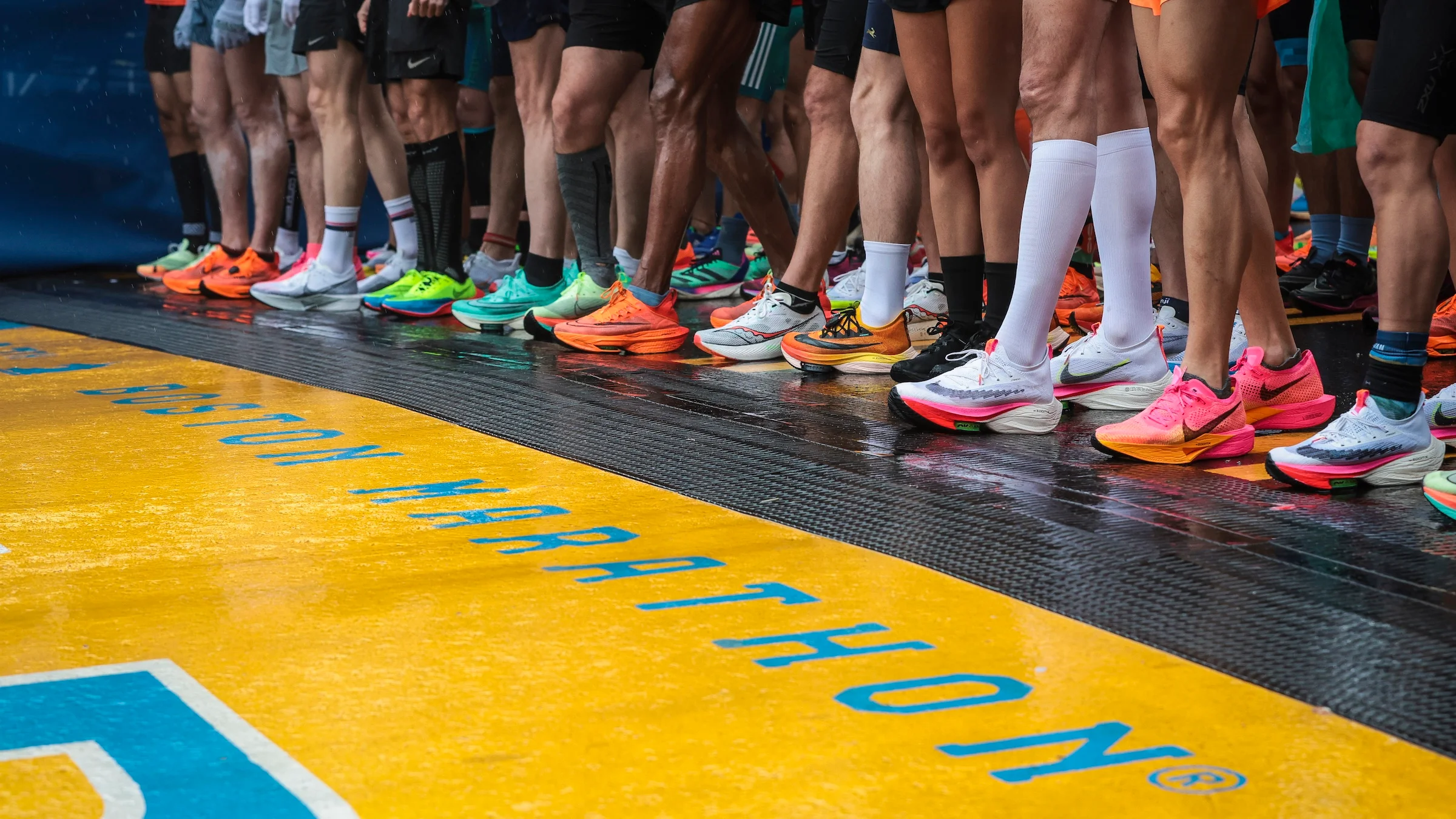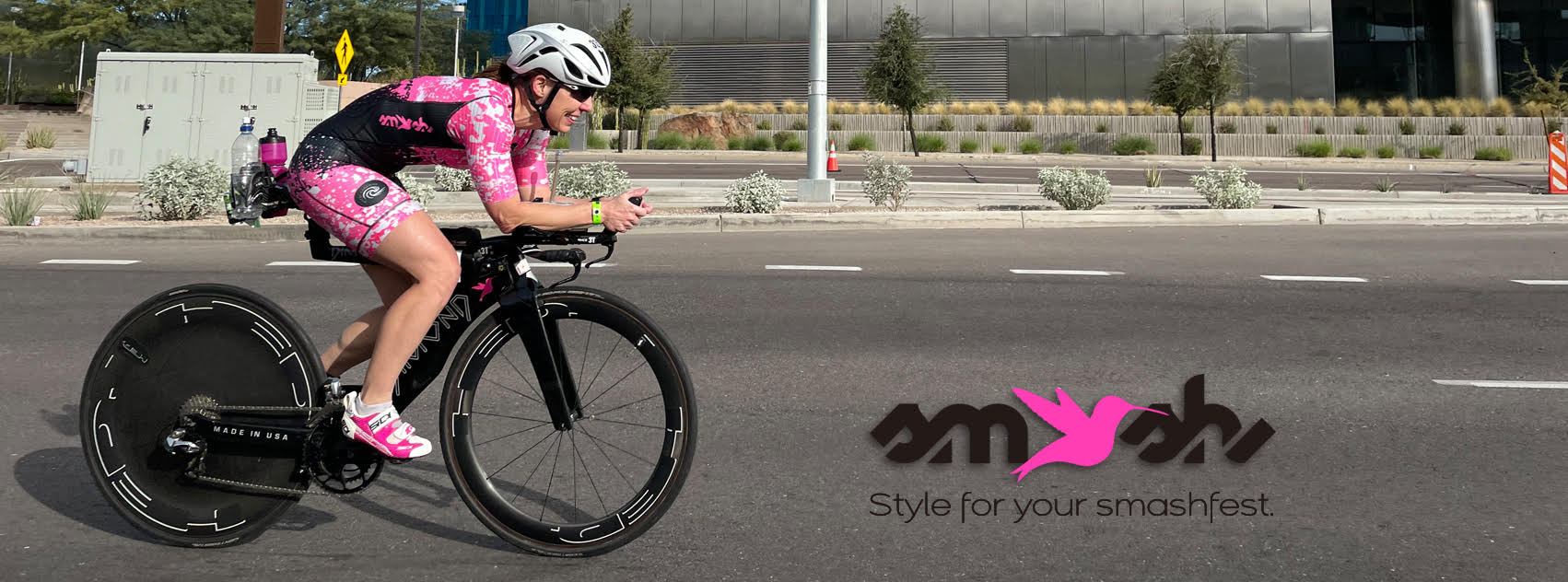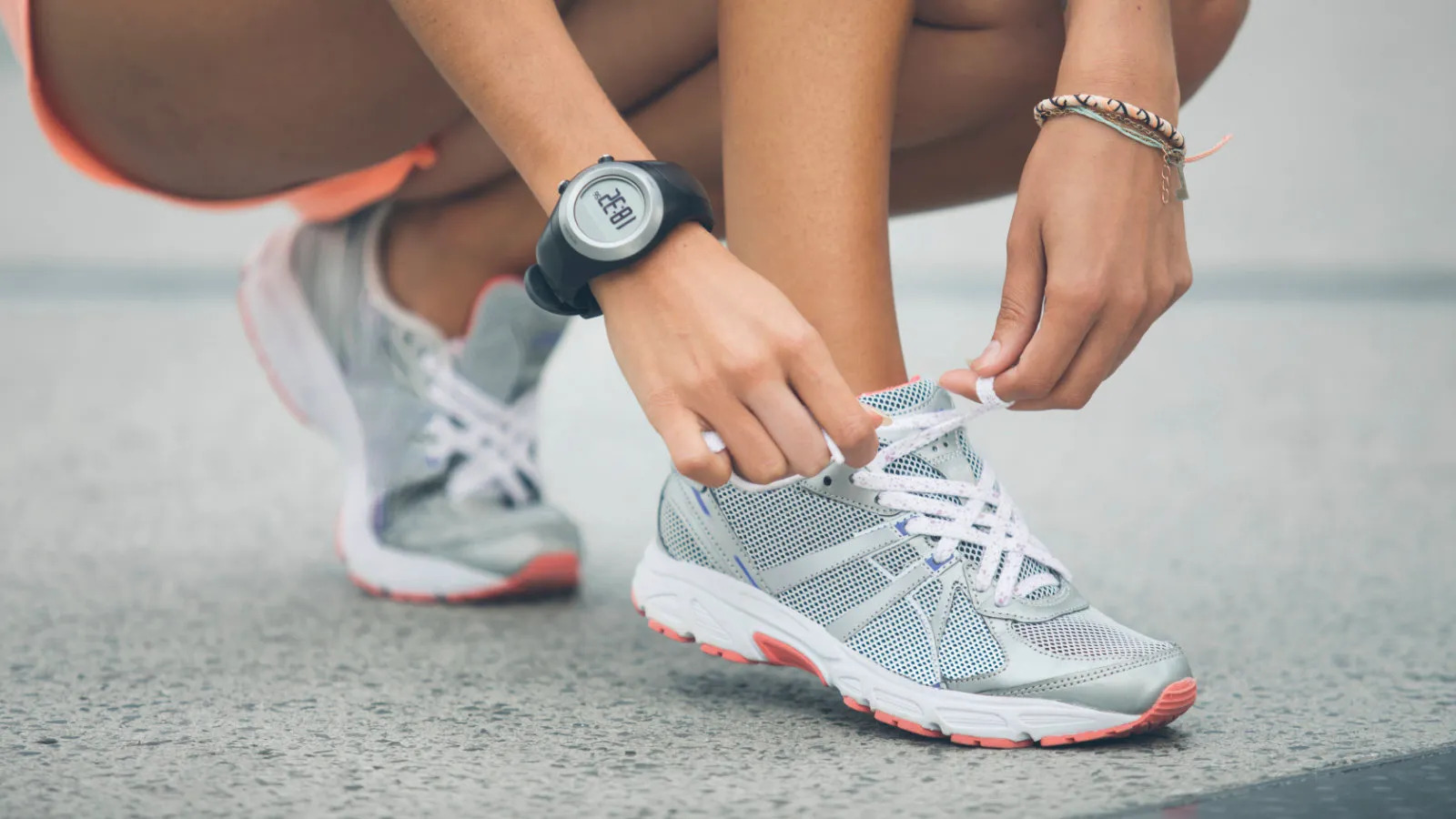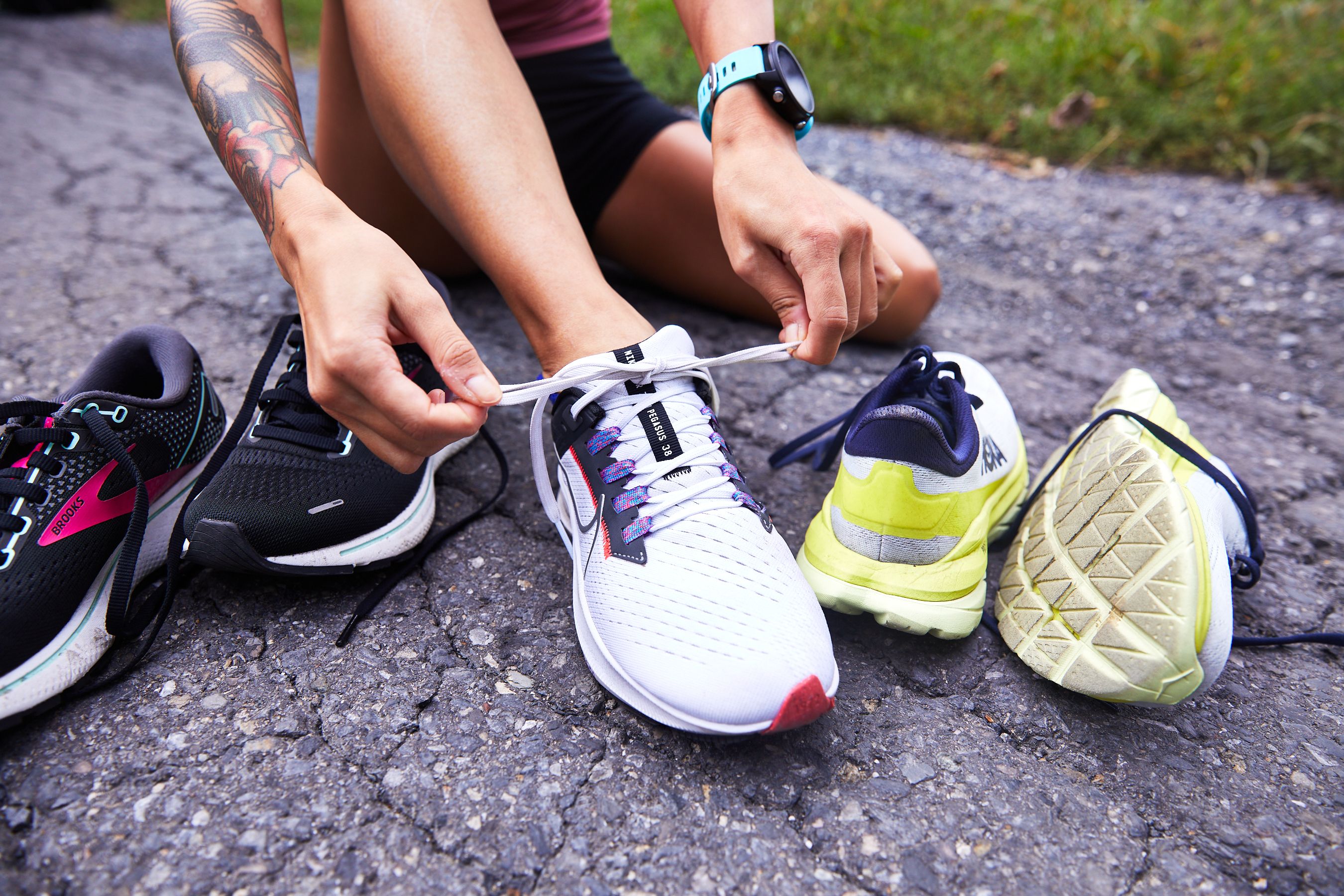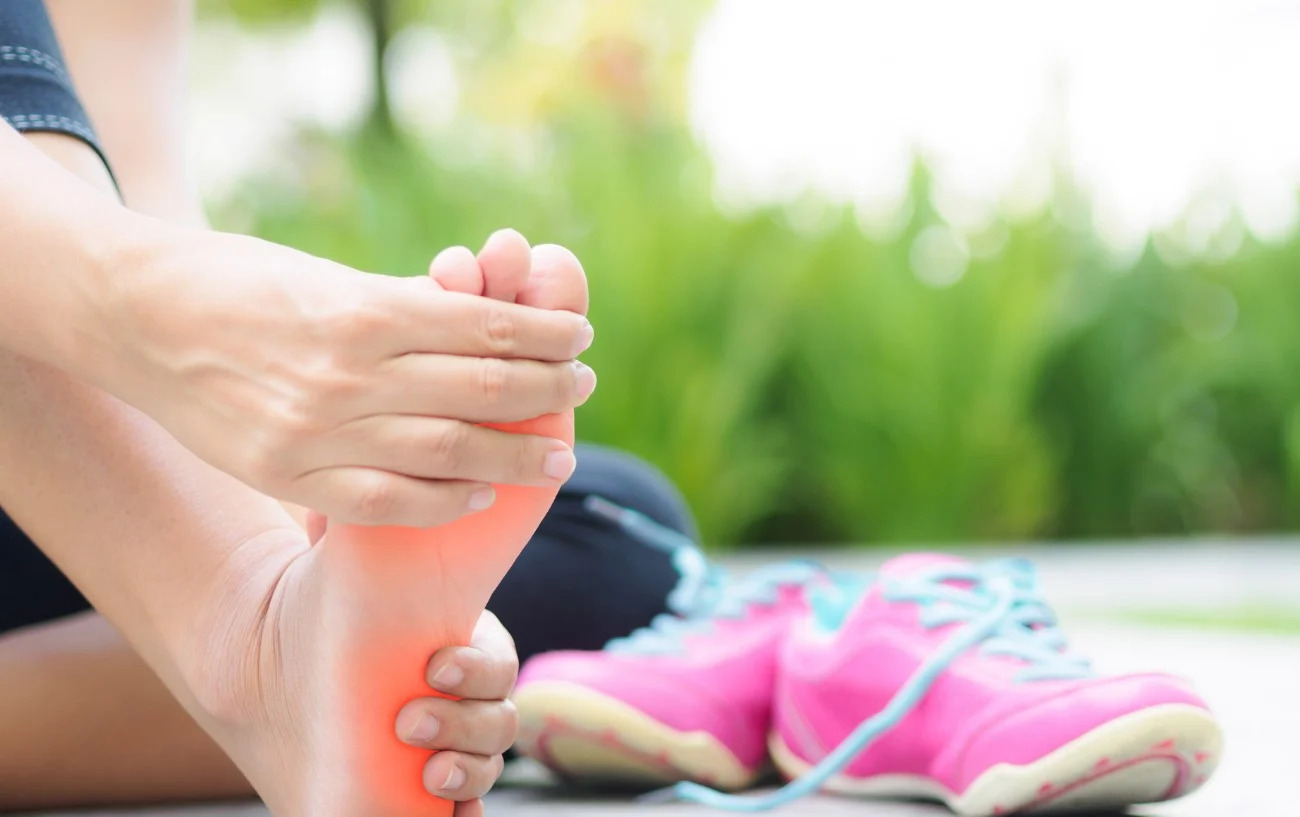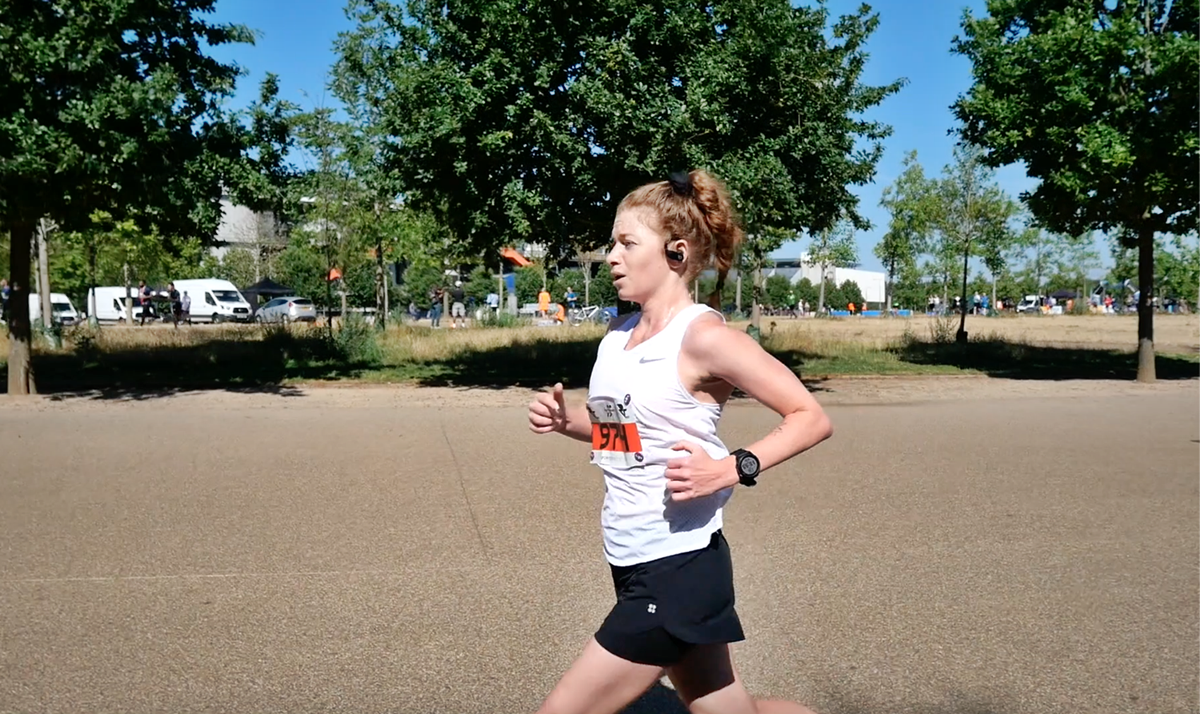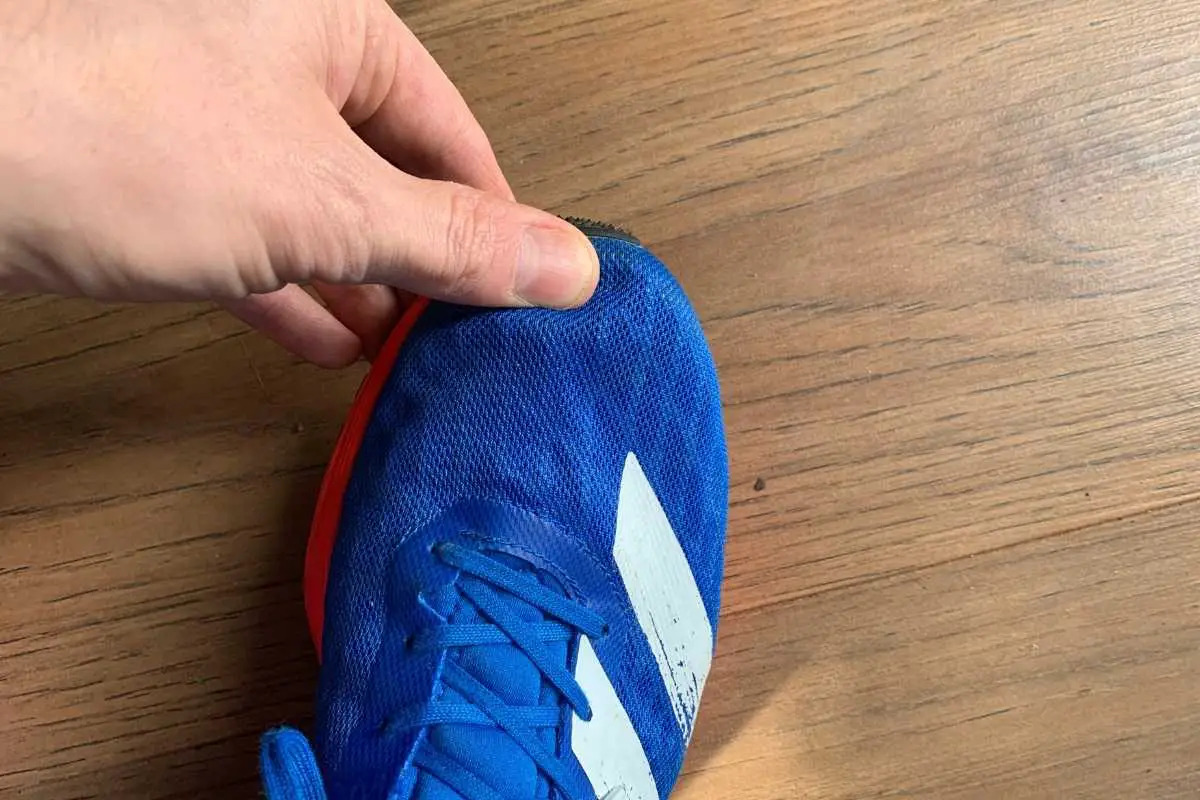

Featured
How To Tell If Running Shoes Are Too Big
Modified: January 22, 2024
Discover the telltale signs that your featured running shoes may be too big. Avoid discomfort and improve performance with the right fit.
Introduction
Choosing the right running shoes is essential for a comfortable and injury-free running experience. While many people focus on finding the perfect fit, it’s equally important to ensure that the shoes are not too big. Wearing running shoes that are too big can lead to a range of issues, including instability, discomfort, and potential injury.
Whether you’re a seasoned runner or just starting out, understanding how to determine if your running shoes are too big is crucial. In this article, we will explore the significance of properly fitting running shoes and discuss the indicators that can help you identify if your shoes are too big. Additionally, we will provide steps to help you determine the right fit for your running shoes.
By the end of this article, you will have a clear understanding of why wearing properly fitted running shoes is essential and the signs to look out for if your shoes are too big. This knowledge will empower you to make informed decisions and ensure a comfortable and enjoyable running experience.
Significance of Properly Fitting Running Shoes
Having properly fitting running shoes is crucial for several reasons. Not only does it affect your comfort during runs, but it also plays a significant role in preventing injuries and maximizing your performance. Here are a few reasons why wearing the right size running shoes is important:
- Comfort: Wearing shoes that are too big can cause discomfort and irritation. Your feet may slide around inside the shoes, leading to friction and potential blisters. Properly fitting running shoes should provide a snug and secure fit, allowing for a more comfortable running experience.
- Stability and Support: Running shoes that are too big can compromise your stability and support. When your feet are not properly supported, it can increase the risk of ankle sprains, twists, and other injuries. Well-fitting running shoes should offer stability and promote proper foot alignment, enhancing your overall performance and reducing the chance of injury.
- Optimal Performance: Wearing running shoes that are the right size can enhance your performance. Ill-fitting shoes can alter your natural running gait and cause unnecessary strain on your muscles and joints. When your shoes fit properly, you can maintain a more efficient stride and achieve a better overall running experience.
It’s important to note that everyone’s feet are unique, and what works for one person may not work for another. Factors such as arch height, foot width, and pronation type can all influence the ideal shoe size and fit. Therefore, it’s essential to try on different styles and sizes to determine the right fit for your feet.
Now that we understand the importance of properly fitting running shoes, let’s explore some common indicators that can help determine if your shoes are too big.
Indicators of Running Shoes Being Too Big
Identifying whether your running shoes are too big is key to ensuring a comfortable and supportive fit. Here are some common indicators that can help you determine if your shoes are too large:
- Slippery or Loose Fit: If your running shoes feel loose or have excessive room in the toe box or heel area, it may indicate that they are too big. Your feet should feel snug and secure, with minimal movement inside the shoe.
- Frequent Tripping or Slipping: If you find yourself tripping or slipping often while wearing your running shoes, it could be a sign that they are too large. This can happen because the extra space causes your foot to move around, affecting your balance and stability.
- Development of Blisters or Calluses: Ill-fitting shoes can lead to friction between your skin and the shoe, resulting in blisters or calluses. If you notice an increase in these skin irritations while wearing your running shoes, it may be an indication that they are too big.
- Toenail Issues: Shoes that are too big can cause excessive movement of your toes inside the shoe, leading to toenail problems. This can range from bruising and blackened nails to ingrown nails. If you experience any discomfort or notice changes in your toenails after a run, it’s worth investigating if your shoes are the correct size.
- Lack of Stability or Support: When your running shoes are too big, they fail to provide the necessary stability and support for your feet. You may feel unsteady or have difficulty maintaining proper form while running. This lack of support can increase the risk of developing foot, ankle, or even knee problems over time.
Keep in mind that these indicators are not definitive proof that your shoes are too big. Some factors, such as foot swelling during runs or wearing thicker socks, may temporarily affect the fit. However, if you consistently experience any of these problems, it’s a good idea to re-evaluate the size and fit of your running shoes.
Now that we have discussed the indicators of running shoes being too big, let’s move on to the steps you can take to determine if your shoes are indeed the correct size.
Slippery or Loose Fit
One of the most obvious signs that your running shoes are too big is when they feel slippery or have a loose fit. When you put on your shoes, they should provide a secure and snug feeling without any extra space or movement.
If you notice that your feet slide around inside the shoe, especially in the toe box or heel area, it’s a clear indication that the shoes are too big for you. The lack of a secure fit can affect your stability and comfort while running, leading to potential injuries.
To determine if your shoes have a slippery or loose fit, consider the following:
- Heel Slippage: When you walk or jog, pay attention to any excessive movement of your heel. If your heel lifts up with each step or if you feel your foot slipping out of the shoe, it’s a sign that your shoes are too big.
- Toe Space: Check the amount of space between the tip of your longest toe (typically the big toe) and the front of the shoe. There should be a thumb’s width of space between your toe and the front of the shoe. If there’s more space than that, it suggests that your shoes are too long.
- Midfoot Fit: The middle part of your foot, known as the midfoot, should feel secure and snug. If you can easily move your foot from side to side within the shoe or if there’s significant room in this area, it could indicate that your shoes are too wide or too big.
If you find that your running shoes have a slippery or loose fit, it’s recommended to try a different size or style. Remember, finding the right fit is essential for comfort and performance during your runs.
Frequent Tripping or Slipping
Frequent tripping or slipping while wearing your running shoes can be a clear indication that they are too big. When your shoes are too large, your feet have excess room to move around inside the shoe, compromising your balance and stability.
If you find yourself tripping or slipping often while wearing your running shoes, consider the following factors:
- Lack of Control: When your shoes are too big, it becomes more difficult to maintain control over your foot movements. Your feet may slide around inside the shoe, causing instability and impacting your ability to maintain balance.
- Uneven Stride: Ill-fitting shoes can result in changes to your natural running gait. You may compensate for the extra space by altering your stride, which can lead to problems with your alignment and increase the risk of injury.
- Width of the Shoe: If your feet are narrow and the shoes are too wide, it can cause excessive side-to-side movement within the shoe, leading to an increased risk of tripping or slipping.
To determine if your shoes are causing frequent tripping or slipping, consider the following steps:
- Pay attention to how your feet feel when you walk or run. If you notice that your shoes feel unstable or if your feet slide around inside the shoe, it’s an indication that they may be too big.
- Observe your balance and stability when wearing your running shoes. If you constantly feel off-balance or find it difficult to maintain stability, it could be a result of ill-fitting shoes.
- Consider the terrain and conditions you’re running in. If you’re experiencing more tripping or slipping than usual, it’s important to rule out environmental factors. However, if the issues persist across different terrains, it’s likely related to the fit of your shoes.
If you consistently experience frequent tripping or slipping while wearing your running shoes, it may be time to consider getting a better-fitting pair. Wearing shoes that provide proper stability and support can significantly reduce your risk of potential injuries during your runs.
Development of Blisters or Calluses
The development of blisters or calluses on your feet can be a clear indication that your running shoes are too big. When your shoes don’t fit properly, excess friction and rubbing can occur, leading to these skin irritations.
If you notice the following signs of blisters or calluses, it may suggest that your running shoes are too large:
- Blisters: Blisters usually form in areas where there’s excessive rubbing, typically on the toes, heels, or sides of the feet. If you find that you’re consistently developing blisters while wearing your running shoes, it’s likely the shoes are not providing a snug enough fit.
- Calluses: Calluses are thickened areas of skin that form as a result of repeated friction or pressure. If you notice calluses developing on specific parts of your feet, such as the ball or heel, it may be a sign that your shoes are not fitting properly.
- Redness or Irritation: In addition to blisters or calluses, you may notice redness, inflammation, or general irritation on your feet after wearing your running shoes. These symptoms indicate that there is excessive rubbing occurring, likely due to the shoes being too big.
To determine if your shoes are causing blisters or calluses, consider the following steps:
- Inspect your feet regularly after runs. Look for any areas of redness, soreness, or the presence of blisters or calluses.
- Assess the fit of your running shoes. Pay attention to whether your shoes have extra room in the toe box or heel area, which can contribute to friction and rubbing.
- Consider the type of socks you’re wearing. Sometimes, the fit of your socks combined with the shoes can affect the likelihood of developing blisters or calluses. Moisture-wicking socks that provide a snug fit can help minimize friction.
If you consistently experience blisters or calluses while wearing your running shoes, it’s recommended to explore options with a better fit. Finding shoes that provide a snug and secure fit can help prevent these skin irritations and improve your overall comfort during runs.
Toenail Issues
Toenail issues can often be a result of running shoes that are too big. The excessive movement of your feet within the shoes can lead to various problems, including bruised toenails, blackened nails, and even ingrown nails.
If you are experiencing toenail issues while wearing your running shoes, it may indicate that they are too large. Consider the following signs:
- Bruised or Blackened Nails: If you notice bruising or discoloration on your toenails, it suggests that your shoes are allowing your foot to slide forward and repeatedly hit the front of the shoe. This can lead to trauma to the nails and result in bruising or blackening.
- Pain or Sensitivity: If you experience pain or sensitivity in your toenails after a run, it could be a sign that your shoes are causing undue pressure on your toenails. This can happen when the shoes are too big, allowing your foot to slide around inside the shoe.
- Ingrown Nails: When shoes are too large, your foot may slide forward, causing your toenails to press against the front of the shoe. Over time, this pressure can cause the nails to grow into the surrounding skin, leading to ingrown toenails.
To determine if your running shoes are causing toenail issues, consider the following steps:
- Examine your toenails regularly for signs of bruising, blackening, or any changes in shape.
- Check the fit of your shoes, especially the space between the tip of your longest toe and the front of the shoe. If your shoes are too big, there may be too much room, which can contribute to toenail issues.
- Consider your foot type and foot shape. If you have wide feet or a high arch, it’s important to find shoes that accommodate your specific needs to avoid excessive pressure on the toenails.
If you consistently experience toenail issues while wearing your running shoes, it’s advisable to seek out a better-fitting pair. Shoes that provide a snug fit can prevent trauma to the toenails and reduce the risk of developing painful nail conditions.
Lack of Stability or Support
Running shoes that are too big can result in a lack of stability and support, which are essential for a safe and comfortable running experience. When your shoes don’t fit properly, they fail to provide the necessary structure and cushioning to support your feet.
If you are experiencing a lack of stability or support while wearing your running shoes, consider the following signs:
- Unsteady Feeling: When your shoes are too big, it may feel like your feet are constantly shifting or sliding inside the shoe. This lack of stability can make it challenging to maintain proper form and balance while running.
- Insufficient Arch Support: Ill-fitting shoes might not offer adequate arch support for your feet. The arch of your foot should feel properly supported throughout your runs. If you notice foot fatigue or discomfort in the arch area, it could be a sign that your shoes lack the necessary support.
- Inadequate Cushioning: Shoes that are too big can impact the effectiveness of the cushioning system. The excess space inside the shoe can prevent the cushioning from properly absorbing shock and providing the necessary protection for your feet and joints.
To determine if your running shoes are causing a lack of stability or support, consider the following steps:
- Assess how your feet feel while running. If you notice a lack of stability, support, or an uncomfortable amount of movement inside the shoe, it suggests that they are too big.
- Pay attention to any discomfort or pain in your feet, ankles, or knees after your runs. This can be an indication that your shoes are not providing the necessary support, leading to undue stress on these areas.
- Consider your specific foot type and orthotic needs. If you have flat feet or high arches, for instance, you may require specific features in your running shoes to ensure adequate stability and support.
If you consistently experience a lack of stability or support while wearing your running shoes, it’s recommended to explore options with a better fit. Finding shoes that offer the appropriate level of stability, support, and cushioning can help prevent injuries and enhance your overall running performance.
Steps to Determine If Running Shoes Are Too Big
If you suspect that your running shoes are too big, there are several steps you can take to determine the right fit. By following these steps, you can ensure a comfortable and supportive running experience:
- Measure Your Feet: Start by measuring your feet using a brannock device or a tape measure. Measure both the length and width of your feet to get an accurate sizing.
- Try on Different Sizes: Visit a specialty running store and try on multiple sizes of the same shoe model. Walk and jog around in the shoes to assess the fit.
- Pay Attention to Toe Room: Check the space between the tip of your longest toe and the front of the shoe. As mentioned earlier, there should be a thumb’s width of space between your toe and the front of the shoe.
- Consider Shoe Width: Determine if the shoe width matches the width of your feet. If the shoes are too narrow or too wide, it may indicate that they are not the right fit for you.
- Try on with Running Socks: Wear the same type of socks that you typically use for running when trying on shoes. This will give you a more accurate sense of how the shoes will feel during your runs.
- Assess Stability and Support: Walk or jog in the shoes to evaluate their stability and support. Pay attention to how your feet feel after a few minutes of movement. If you experience any instability or lack of support, it may indicate that the shoes are too big.
- Listen to Your Feet: Trust your instincts and listen to how your feet feel in the shoes. If anything feels off or uncomfortable, it’s a sign that the shoes may not be the right fit.
- Seek Expert Advice: If you’re uncertain about the fit of your running shoes, consult with a knowledgeable shoe fitting specialist at a running store. They can provide personalized advice and recommendations based on your foot type and running needs.
Keep in mind that the size and fit of running shoes may vary between brands and even different models within a brand. It’s essential to prioritize comfort, support, and stability over the numbers on the shoe label.
By following these steps and taking the time to find the right fit, you can ensure that your running shoes are not too big and provide the necessary support for your runs.
Conclusion
Ensuring that your running shoes are the right size is crucial for a comfortable and injury-free running experience. Running shoes that are too big can lead to a range of issues, including instability, discomfort, and potential foot problems. By paying attention to the indicators and following the steps outlined in this article, you can determine if your running shoes are the correct size.
Remember, slipperiness or a loose fit, frequent tripping or slipping, development of blisters or calluses, toenail issues, and lack of stability or support are all signs that your running shoes may be too big. By evaluating these indicators and taking the necessary steps, such as measuring your feet, trying on different sizes, and paying attention to toe room and shoe width, you can find the perfect fit for your running shoes.
Don’t ignore any discomfort or signs of ill-fit. Your running shoes should feel snug, secure, and provide the necessary stability, support, and cushioning. If you’re unsure about the fit, seek advice from experts at specialty running stores who can guide you in finding the ideal pair of shoes for your feet.
By investing time and effort into finding properly fitting running shoes, you can enhance your comfort, prevent running-related injuries, and optimize your running performance. Remember, every foot is unique, so prioritize fit and feel over the numbers on the shoe label. Enjoy your runs with the confidence that your shoes are the perfect size for you!


